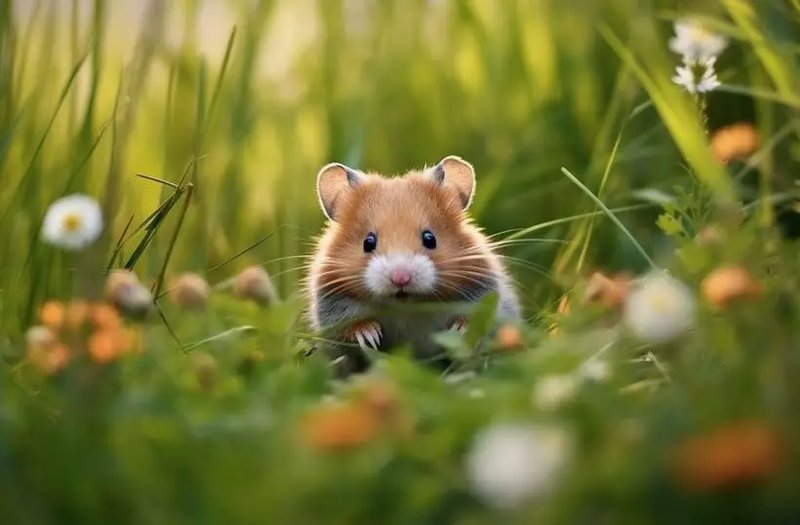
Imagine a teddy bear hamster as a delicate little balloon—beautiful and light but needing the right environment to flourish. If not cared for properly, they can develop various health problems that can affect their overall happiness and lifespan. In this article, we’ll dive into the most common health problems that teddy bear hamsters face and share some preventive tips so you can keep your little buddy bouncing with joy.
Knowing the Common Health Issues
First things first, let’s talk about the health problems that your teddy bear hamster might encounter. Knowing these is key to being a responsible pet parent. One common issue is wet tail, a serious condition that can arise from stress or poor hygiene. Just like how we might get sick if we’re stressed out or not taking care of ourselves, hamsters can too. Wet tail involves diarrhea and, if not treated quickly, can lead to severe health issues or even death.
Another frequent concern is respiratory problems. Teddy bear hamsters are sensitive to changes in temperature and humidity. If they’re kept in an environment that’s too hot, too cold, or too damp, they can develop breathing issues. Think of it like trying to breathe in a stuffy, warm room—it’s not easy and isn’t good for anyone.
Lastly, their little teeth can lead to issues too. Hamsters’ teeth grow continuously, so they need to chew on hard materials to keep them trimmed. If they can’t wear them down, they might develop overgrown teeth, which can cause pain and problems eating. This is kind of like letting our nails grow too long; eventually, it hurts!
Wet Tail: The Silent Threat
Wet tail is one of the most dangerous health problems for teddy bear hamsters. It often strikes when they’re stressed, usually due to changes in their environment or poor hygiene. If you notice your hamster has a messy bottom or is lethargic, it’s vital to act fast.
To prevent wet tail, ensure your hamster’s living space is clean. Regularly remove soiled bedding and leftovers. Fresh bedding should be provided frequently. It’s also important to minimize stress. Try to keep their environment consistent—avoid loud noises or sudden movements around their cage.
If you suspect your furry friend has wet tail, it’s best to consult a veterinarian quickly. They can provide the right treatment, which may include medications or changes in diet. Remember, catching this problem early can save your hamster’s life.
Respiratory Issues: Keeping the Air Fresh
Respiratory problems in teddy bear hamsters can be caused by several factors, including dust from their bedding, poor ventilation, or sudden temperature changes. Imagine having to live in a cramped space with a stuffy nose—that’s what it can feel like for them. Signs of respiratory issues can include coughing, sneezing, or difficulty breathing.
To keep your little buddy’s lungs clear, choose good-quality bedding that doesn’t produce a lot of dust. Avoid cedar or pine shavings as they can irritate their respiratory system. Instead, look for aspen or paper-based bedding. Additionally, make sure their cage is in a well-ventilated area that maintains a stable temperature.
If your hamster shows any signs of respiratory distress, consult a vet right away. They may need antibiotics or other treatments to support their recovery.
Overgrown Teeth: The Chew Challenge
You might be surprised to learn that teddy bear hamsters can suffer from overgrown teeth. These little critters require something to gnaw on to keep their chompers at a healthy length. If they don’t have enough hard materials to chew, they can develop issues that make it hard to eat. This is akin to having long nails that make it tough to grasp things—frustrating and painful!
To prevent tooth problems, add chew toys made from wood or other safe materials to your hamster’s cage. Carrots, apples, or specially designed treats can also help wear down their teeth. Make it a habit to check their teeth regularly; if you notice any abnormalities or signs of pain while eating, visit your vet.
Obesity: A Growing Concern
It’s easy to spoil our pets with treats, but for teddy bear hamsters, obesity can become a real problem. While those little faces can melt your heart, overindulging them can lead to serious health issues, just like in humans. If you notice your hamster becoming more sluggish and less active, it could be time to evaluate their diet.
To prevent obesity, offer a balanced diet that includes high-quality hamster pellets and plenty of fresh veggies. A *small amount* of treats can be okay, but avoid making them a significant part of their diet. Additionally, make sure your hamster gets plenty of exercise. A hamster wheel or tunnels can provide hours of fun and help keep their weight in check.
Checking for Signs: Regular Health Monitoring
Being attentive to your teddy bear hamster’s behavior and appearance can alert you to potential health issues. Regular health checks can make a huge difference. Spend time each day observing how they move, eat, and interact with their environment.
Common signs of illness include lethargy, lack of appetite, changes in droppings, or unusual behavior. If you spot any of these signs, don’t hesitate to consult your veterinarian. Keeping a journal of your hamster’s habits can also help you track any changes over time. It’s like keeping a diary of your pet’s health!
Creating a Safe and Healthy Environment
An essential part of preventing health problems in teddy bear hamsters is providing them with a safe and comfortable living environment. Make sure their cage is spacious enough for them to explore, and free from hazards like sharp objects or small spaces where they could get stuck.
Regular cleaning can prevent issues like wet tail and respiratory problems. It’s best to clean their cage at least once a week. Replace bedding, freshen up their food and water, and ensure there are no leftover scraps lying around.
Additionally, create a cozy environment that mimics their natural habitat. Adding hiding spots, tunnels, and exercise options can help reduce stress and keep your hamster engaged.
Caring for a teddy bear hamster is a rewarding experience, filled with little moments of joy and discovery. By staying aware of common health problems and implementing preventive measures, you can ensure your furry friend lives a happy, healthy life. Remember, a clean, safe environment, a balanced diet, and regular vet check-ups go a long way.
Just like any relationship, it’s about understanding their needs and responding appropriately. So, keep that little fluffball active, engaged, and free from stress, and you’ll enjoy many happy years together!

